Filco is one of the most well-known brands of mechanical keyboards in the world, but not much is really known about the company behind the brand. In this article, we’ll look a little bit at the company itself and the various kinds of keyboards they’ve produced.
Ready? Let’s go!
A potted history of Diatec
 Filco keyboards are produced by Diatec Corporation of Japan. The company is based out of Chiyoda-ku in Tokyo. Diatec’s focus is on the Japanese, Korean and Chinese markets so it relies on distributors like The Keyboard Company to handle sales in Europe and the United States.
Filco keyboards are produced by Diatec Corporation of Japan. The company is based out of Chiyoda-ku in Tokyo. Diatec’s focus is on the Japanese, Korean and Chinese markets so it relies on distributors like The Keyboard Company to handle sales in Europe and the United States.
Diatec was founded on June 17th, 1982. The specific division that deals with designing keyboards is the C.P.S. division, which has a turnover of about 40 million yen annually.
Filco mechanical keyboards have been prized for years for their excellent longevity and superior typing experience. They are typically built like tanks and are available in a wealth of options, including full format and tenkeyless (no numberpad) variants, different colour schemes and utilising different mechanical switches.
 The Japanese-designed Majestouch keyboards have been produced since 2004, but only around 2008 did they become popular when they were adopted by the booming South Korean eSports scene in games like StarCraft and WarCraft III. With the rapid expansion of the Western gaming scene in the last couple of years on the backs of games like StarCraft II, League of Legends and others, Filco mechanical keyboards have become increasingly prized worldwide.
The Japanese-designed Majestouch keyboards have been produced since 2004, but only around 2008 did they become popular when they were adopted by the booming South Korean eSports scene in games like StarCraft and WarCraft III. With the rapid expansion of the Western gaming scene in the last couple of years on the backs of games like StarCraft II, League of Legends and others, Filco mechanical keyboards have become increasingly prized worldwide.
As mechanical keyboards have come in vogue, Filco has had to compete in an increasingly crowded market. Peripheral manufacturers that have been known for longer in the Western world like Razer, Cooler Master and Corsair have all begun to produce their own mechanical keyboards, using a similar basic design that utilises Cherry MX switches but with further embellishments designed to appeal to gamers. For example, keyboards from these corporations will include backlighting, macro keys and media controls.
In response to this increased pressure and heavier focus on gaming, Diatec have produced Filco keyboards that will appeal to pro and casual gamers. We’ll see a few examples of these in the next section.
Filco Keyboards
The most famous line of Filco keyboards in the West is the Majestouch line. The Majestouch line has had one major revision and many minor ones. There also have been a number of limited edition variants produced. Let’s have a look at the most interesting ones.
Early Majestouch models
The very first Majestouch keyboard was released in December 2004. The keyboard unsurprisingly sported a Japanese layout and used Cherry MX Brown switches.
2005 saw the release of a limited edition ‘Italian red’ version, also in a Japanese layout. The first ASCII layout Filco keyboard wasn’t produced until 2006, with the first Cherry MX Black (Linear) switches being used later that same year. Cherry MX Blue (Tactile Click) switches were added as an option in 2007.
The first Majestouch to support N-Key Rollover (NKRO) was released in 2007. This means that there’s no limit to the number of key presses you can make simultaneously. These models only supported Black and Brown switch options initially, although later Blue switches were made available on the NKRO model. NKRO would become a part of all Majestouch models from here on.
Majestouch Tenkeyless
Smaller format Majestouch keyboards were first introduced in July 2008. These were called Tenkeyless or TKL, as they didn’t include the 10 numberpad keys in order to achieve a much more portable Majestouch. The TKL variants are also ergonomically superior, as you can keep your arms in a more natural position directly ahead instead of stretched to the sides; you’re not always reaching out for the mouse.
Majestouch ZERO
Majestouch keyboards with white Alps switches were released in late 2008. These switches are both tactile and clicky.
The Majestouch-2 came out in mid 2011. On the surface, the Majestouch-2 looks quite similar to the earlier edition as most of the changes were made to the printed circuit board (PCB) that lies at the heart of the keyboard. The PCB has been made out of a more resilient material that is better suited to the physical stresses of being typed upon. The solder pads go through the holes drilled in the board and the PCB is also more heat-resistant to allow for better initial soldering.
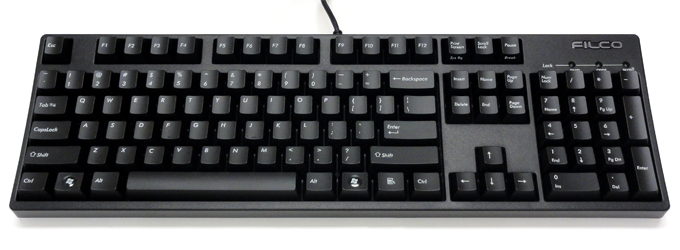 These changes make the manufacturing process better for Diatec, but also should result in higher longevity and lower failure rates, an impressive feat given the already low incidence of issues with the original Majestouch. The typing feel should be slightly improved as well.
These changes make the manufacturing process better for Diatec, but also should result in higher longevity and lower failure rates, an impressive feat given the already low incidence of issues with the original Majestouch. The typing feel should be slightly improved as well.
The Majestouch Ninja came after the Majestouch-2 in June 2011 and was aimed to both 1) eliminate the problem of fading keycaps forever and 2) be desirable to the gaming market. On the Ninja, the keycaps are printed on the front of the keys instead of on the top as normal. That means you’re never hitting the keycaps with your fingers as you type, so they’re never worn away. It also means that to an observer, your keys won’t have any legends on them at all, which looks pretty cool. However, if you do need to find that obscure bit of punctuation, you can still lean back and have a look. After the initial release of Black and Brown switches, Blue switches were added in December.
Majestouch-2 Cherry Red
In April 2012 Cherry added a fourth switch option to its entire Majestouch-2 lineup: Cherry MX Red switches. These switches are a lighter linear switch than the Black. We’ll cover the differences between switches in more detail in a later article.
Majestouch-2 Colour Variants
There are also quite a few different colours available for the Majestouch-2 in addition to the standard black. For instance, there’s a beige / white version, limited edition keyboard with yellow keys, a camo version, a blue version and a white-on-pink version. These offer the same great typing experience as a normal Majestouch-2, but with a splash of colour that’ll really make the keyboard your own.
Conclusion
So that’s about it – now you know a little bit more about Diatec and the keyboards they produce. If you’ve got any questions about Filco keyboards I’d be happy to answer them. Your feedback about the article would likewise be appreciated. Also, feel free to suggest future topics we can cover!
Thanks for reading, and have a great day. For more mechanical keyboard knowledge blasts, the latest news and fun contests, follow us on Twitter and like us Facebook.
| Follow @KeyboardCo |
Sources:
- Deskthority Wiki
- Diatec’s website
- Documents prepared by Diatec

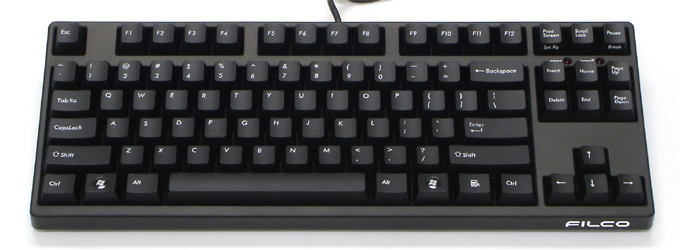
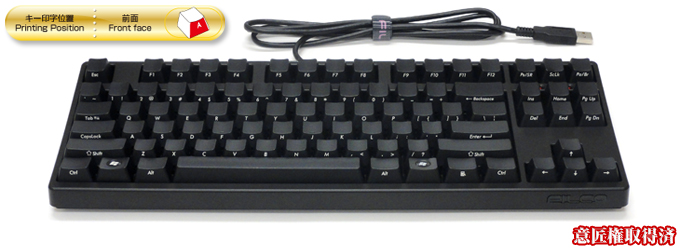
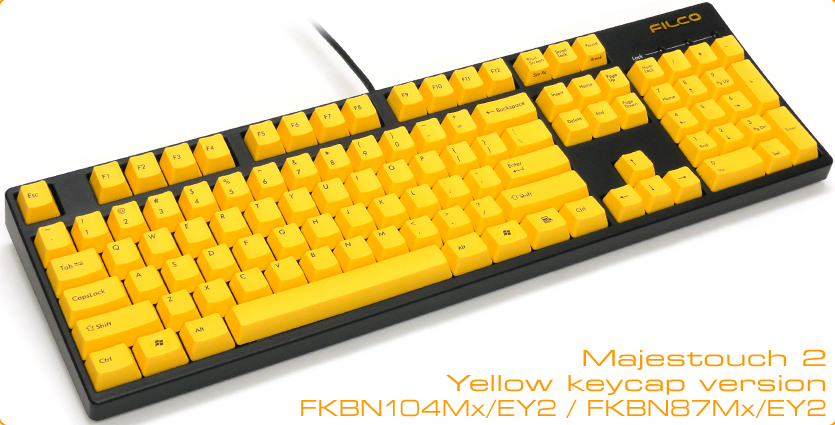
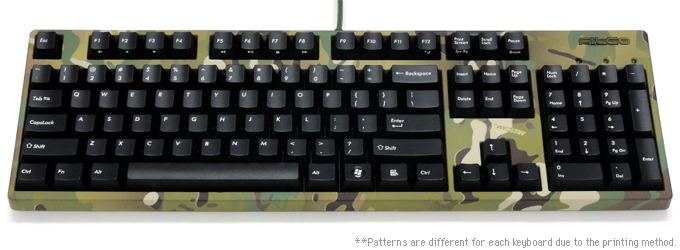
Great article.
But I thought the real rise in popularity happened after I satarted using them!
Leave it to the Asian gaming market to popularize a product of quality like Filco, while the western world gets the Mad Catz Strike 7…
Haha 🙂
I thought the Zero had White ALPS switches.
Indeed, I’ve fixed this now 🙂
Zero is white ALPS, that’s correct.
Also you called MX Blacks tactile once or twice but they’re actually linear.
Other than that, nice post.
Thanks for the corrections, you’re right of course 🙂
I received my first Filco keyboards today from Keyboard Co. I already own Ducky keyboard and thought that keyboard just can’t get any better but I was wrong. Filco is definetly better (it feels better and less typing errors) than Ducky – even I have same Cherry MX Blue switch on both keyboards. I really wonder why..
It is interesting to small your fingers after typing on one of these keyboards for a while. There is a faint smell of roses mixed with fainter smell of vomit. Very nice.
So how does a Filco stand compared to the other Mecho’s being made by Razor etc.. say compare a Majestouch-2 to a Razer Blackwidow Ultimate… any suggestions because i am looking to buy 1 and got stuck between these two for a choice…
Help.. anyone ?? 🙂
Generally, Filco keyboards are regarded as having higher build quality – they’re built like a tank! New Razer keyboards are OK, but they’re still not as well made and aren’t as well respected.
bro.. i had the same dilema a few weeks back until i researched to my limits regarding the same…
now the bottom line is.. if you dont mind giving up on a fancy blue LED light up under your keys in a key board… chuck the Razer BW.. nd buy the Filco.. i did the same.. cause ultimately.. you dont end up looking down too much while you type and the build & usage quality as outlines by a lot of people.. seems shades better in a Filco compared to a RBW.
finally its your cash & decision .. but since i had the same dilema and ultimately ended up buying the Filco, after much research… i thought ill suggest …
cheers…